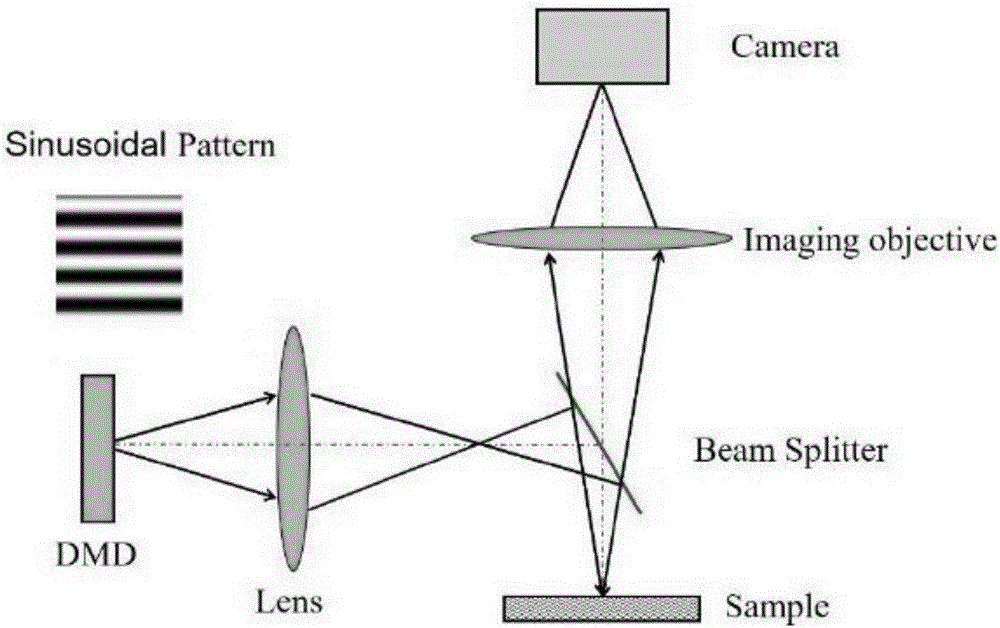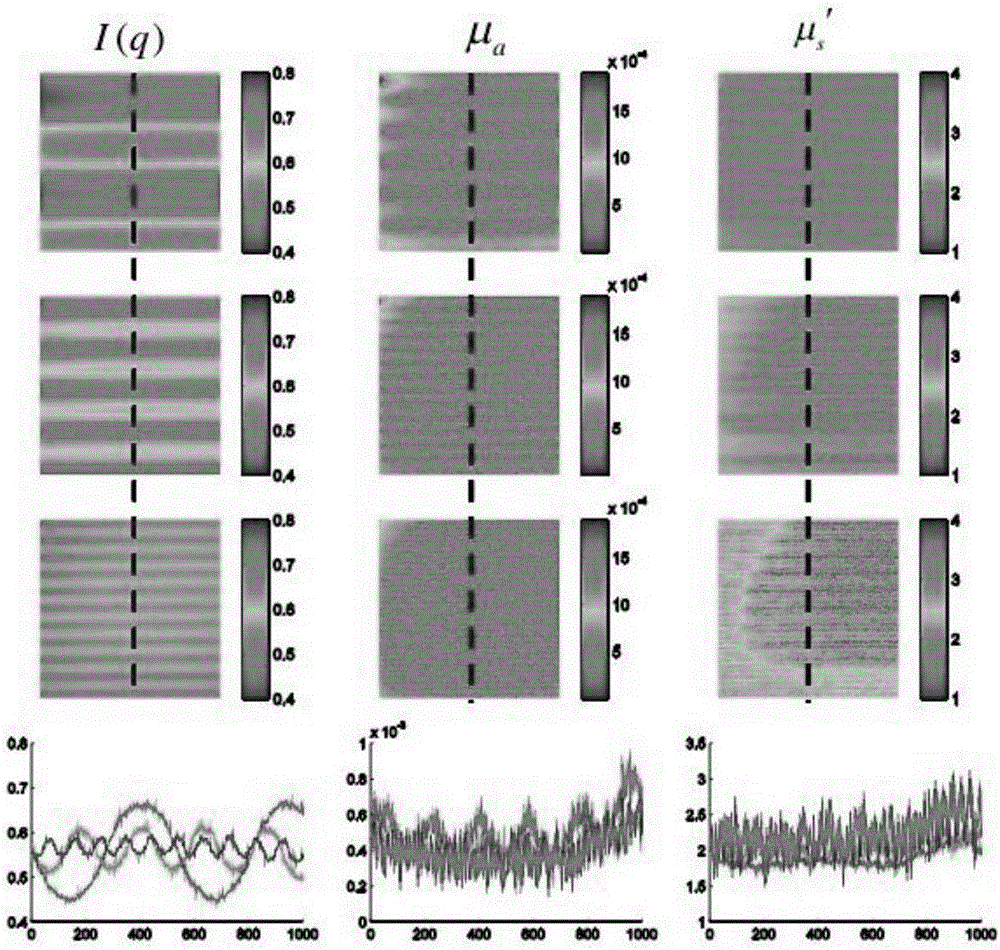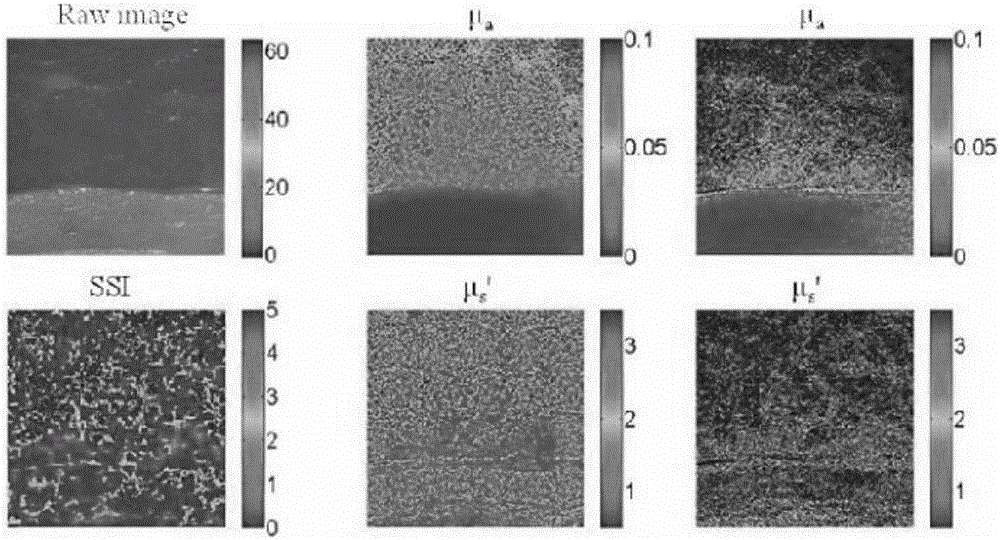Rapid non-destructive tissue biopsy method and technique based on spatial frequency domain-modulated large area resolution microstructure
A technology of tissue biopsy and microstructure, applied in image detector methods and image signal processing, material analysis, material analysis through optical means, etc., can solve the problems of inability to achieve the accuracy and high resolution of optical imaging systems
- Summary
- Abstract
- Description
- Claims
- Application Information
AI Technical Summary
Problems solved by technology
Method used
Image
Examples
Embodiment Construction
[0023] Embodiments of the present invention will be further described below in conjunction with accompanying drawings:
[0024] The scattering of light in turbid media (such as biological tissue) is a complex process, and the propagation of light can be accurately described by the Boltzmann Radiation Equation (RTE), but its calculation is time-consuming and difficult to apply at present. In addition, the diffusion approximation equation of RTE is only valid when the distance between the light source and the detector is more than 3 / 4 times of the transmission step length, and it is invalid when the distance between the light source and the detector is close. However, the phase function of the scattering medium contains the basic information of the medium morphology, and the non-diffused light has a significant impact on the reflectivity when the distance between the light source and the detector is smaller than a single transmission step. Therefore, the most important step in H...
PUM
 Login to View More
Login to View More Abstract
Description
Claims
Application Information
 Login to View More
Login to View More - R&D
- Intellectual Property
- Life Sciences
- Materials
- Tech Scout
- Unparalleled Data Quality
- Higher Quality Content
- 60% Fewer Hallucinations
Browse by: Latest US Patents, China's latest patents, Technical Efficacy Thesaurus, Application Domain, Technology Topic, Popular Technical Reports.
© 2025 PatSnap. All rights reserved.Legal|Privacy policy|Modern Slavery Act Transparency Statement|Sitemap|About US| Contact US: help@patsnap.com



